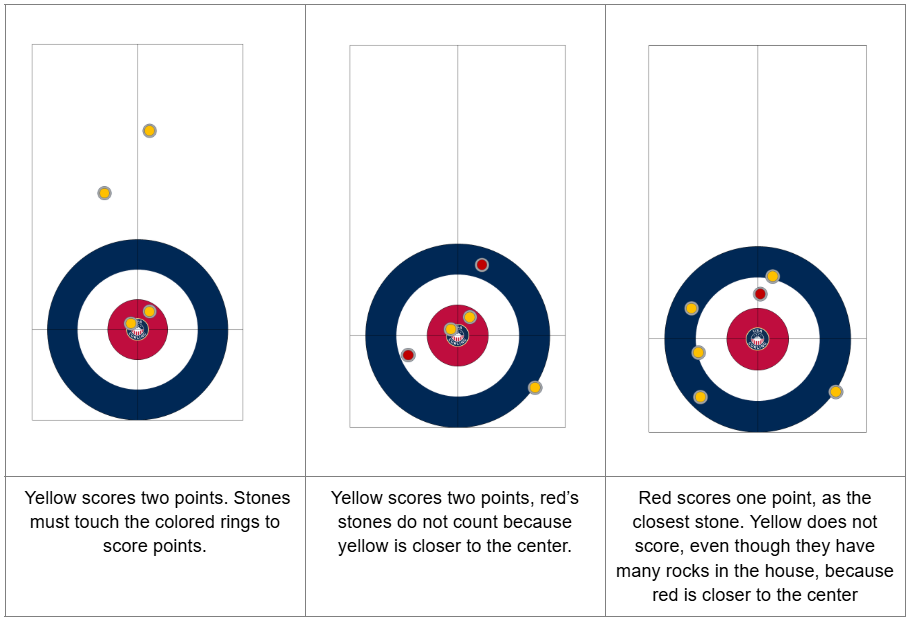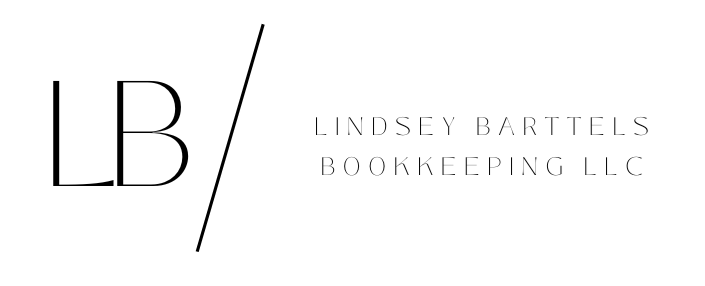Curling is a winter sport played on a “sheet” of ice between two teams of four players each. A game consists of a series of rounds called ends, and in each end, teams take turns throwing stones until each team has thrown eight stones. After all stones are delivered, the team with the stone closest to the center of the house, the target at the far end of the sheet, scores points. Another end is played by throwing the stones back to the starting side of the sheet.
The game gets its name from the lateral movement of the stones as they travel down the sheet. Stones will “curl” to the right or left of the release point as they glide down the ice.
Basics of Curling (from USA Curling)
Curling gets its name from the motion of the stone on the ice. The delivering player can influence curl by rotating the stone—rotating clockwise makes the stone curl to the right, rotating counterclockwise makes the stone curl to the left. Sweeping influences the curl and the distance a stone can travel. The skip is in charge of directing the sweepers in how to sweep so that they can best influence the path of the stone.

Traditionally, sweeping a stone will reduce how much it curls. If a stone is curling too much, the skip may yell at the sweepers to sweep “for line” which will help hold the stone straighter and keep it from wrecking on a guard or over curling. Sweeping can also help carry a stone further down the ice. If a stone doesn’t have enough momentum, or weight*, to make it to its target spot, the sweepers can sweep it to keep it moving longer.
Changes in modern sweeping technology and techniques have allowed sweepers to have more influence over the direction of a stone. Some techniques allow sweeping to promote curl, rather than just holding a stone’s path straighter. Recent years in curling have seen changes to the equipment permitted in competitions to reduce some of the influence sweepers can have on a shot. These equipment restrictions are generally reserved for competitive play and don’t usually apply to weekly league games among recreational curlers.
A curling team is typically made up of 4 people. Each teammate delivers 2 stones per end, but not all teammates sweep every stone.
- Lead: Delivers the team’s first two stones. Sweeps the remaining stones in the end.
- Second: Delivers the team’s 3rd and 4th stones. Sweeps the lead’s stones and stones after their deliveries.
- Vice (short for Vice-Skip): Delivers the team’s 5th and 6th stones. Sweeps the first 4 stones, then holds the broom for the Skip’s stones
- Skip: Delivers the team’s last two stones. The captain of the team and literally calls the shots for the games. Typically does not sweep.
Lead and Second make up the “Front End” of the team. Since they sweep the most stones, they are generally responsible for understanding the weight of a stone and knowing if it needs to be swept if it’s light. Vice and Skip are the “Back End” of the team. The Vice often serves as the communicator between the Front End and the Skip. The Skip manages most of the strategy and tactics in a game, but the Vice may sometimes contribute to the Skip’s decisions.
Some teams use a non-traditional throwing order, where they skip or vice may not throw in the order defined above.
Being able to throw the last stone in an end* is an advantage called “Hammer*.” The name comes from being able to brute-force your way to scoring with your last stone. Typically the team with hammer is expected to score 2 points in an end. If you score, you lose the advantage in the next end, and the non-scoring team gets hammer. The strategy a team uses in an end will depend on if they have hammer, how urgently they need to score, and how many ends are left in the game.
All 16 stones in an end* have been thrown, it’s time to figure out the score. Only one team scores in each end: the team with a stone closest to the pin*—what we call the very center of the house. The stone closest to the pin scores, and the scoring team gets 1 additional point for each stone closer to the pin than the closest opposition stone. Stones must touch the rings (scoring area) to be eligible to score. Each scoring stone is worth 1 point, no matter the distance from center. 
biter: A rock that is just touching the outer edge of the house
blank end: An end in which no rocks are touching the house after all rocks have been delivered resulting in no score for either team
bonspiel: A curling tournament or competition
broom: Used both for sweeping and support in the delivery
burnt rock: A rock in motion touched by a player or a player’s equipment. If this occurs between the hog lines, the rock is taken out of play.
button: The smallest circle of the house. The size of the button can vary between venues
*curl: The curved path of the rock
draw: A call for a rock to come to a rest in the house
*end: segment of play in which teams alternate delivery of all 16 stones
free-guard zone: The area at the playing end between the hog line and tee line not including the house. Rocks resting in this zone are not allowed to be removed from play until the 6th rock of the end
guard: A rock resting between the far hog line and the house, positioned to protect another rock
hack: Fixture in the ice used to push off during delivery. also A down-weight takeout. Rocks thrown at this weight, if they did not hit anything, would come to rest at the far hack.
handle: The part of the rock that is held by a player. also Used to describe the desired rotation of the rock during delivery
*hammer: The last rock delivered in an end
hog line: A line parallel to the tee-line 15 ft in front of the house on either end
line: The path the rock follows as it travels down the ice (includes curl)
*pin: The dead center of the house (where the tee-line and center-line intersect)
slider: The sliding part of the shoe that is in contact with ice during delivery. Made of Teflon or stainless steel. These can either be attached to the shoe, as is the case with dedicated curling shoes, or step-on pieces that are available for play with non-curling shoes
*shot rock: The rock that is closest to the center of the house at any given time during the end
stabilizer: Used as a delivery aid for balance during the slide. Stabilizers provided by the club are made from PVC pipe. Stabilizers are also available in a number of forms for purchase from various curling equipment manufacturers
stone/rock: The object used in curling to score points. Made of granite or sometimes ceramic. The terms “stone” and “rock” are used interchangeably
tee-line: The horizontal line bisecting the house, perpendicular to the centerline. Draws are frequently called to be “tee-line weight”
takeout: When a rock is thrown with enough weight to remove another rock from play
*weight: Describes the speed of the rock as it travels down the ice. Weight calls for draws are typically made by calling out where the rock is expected to stop.










